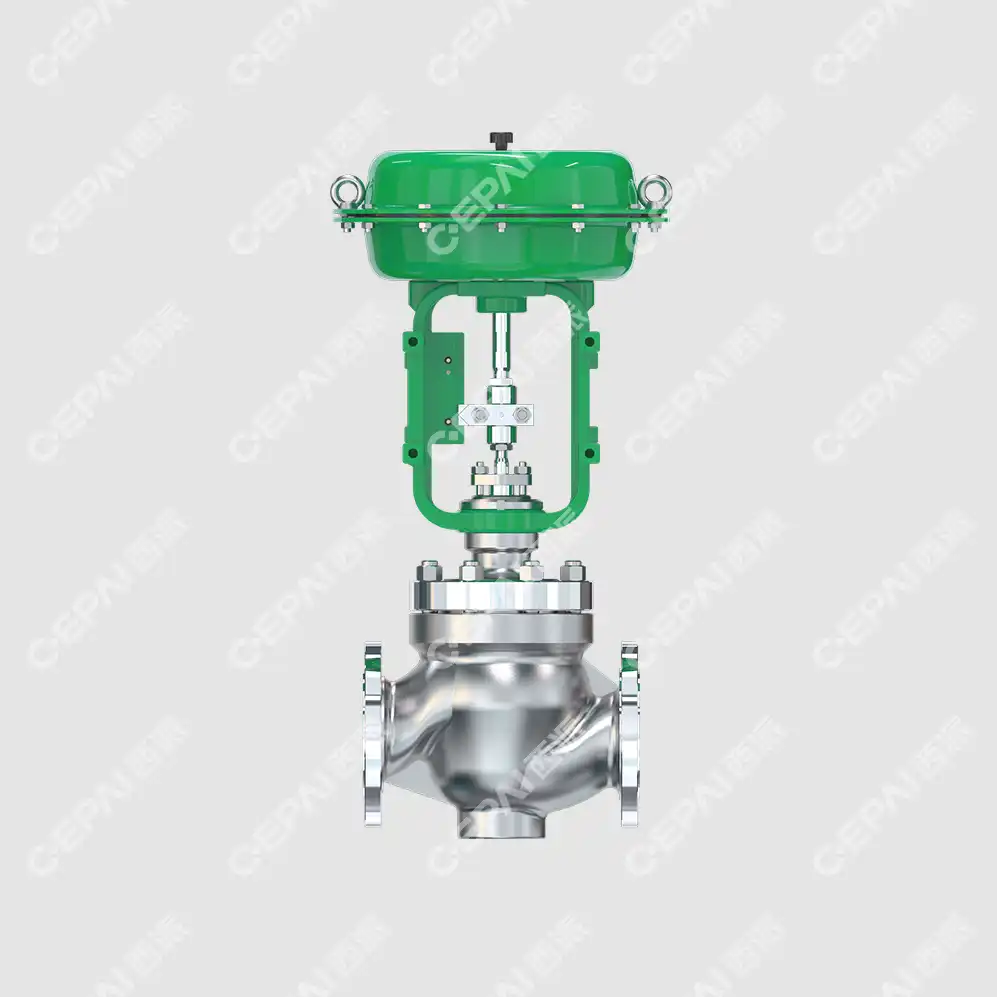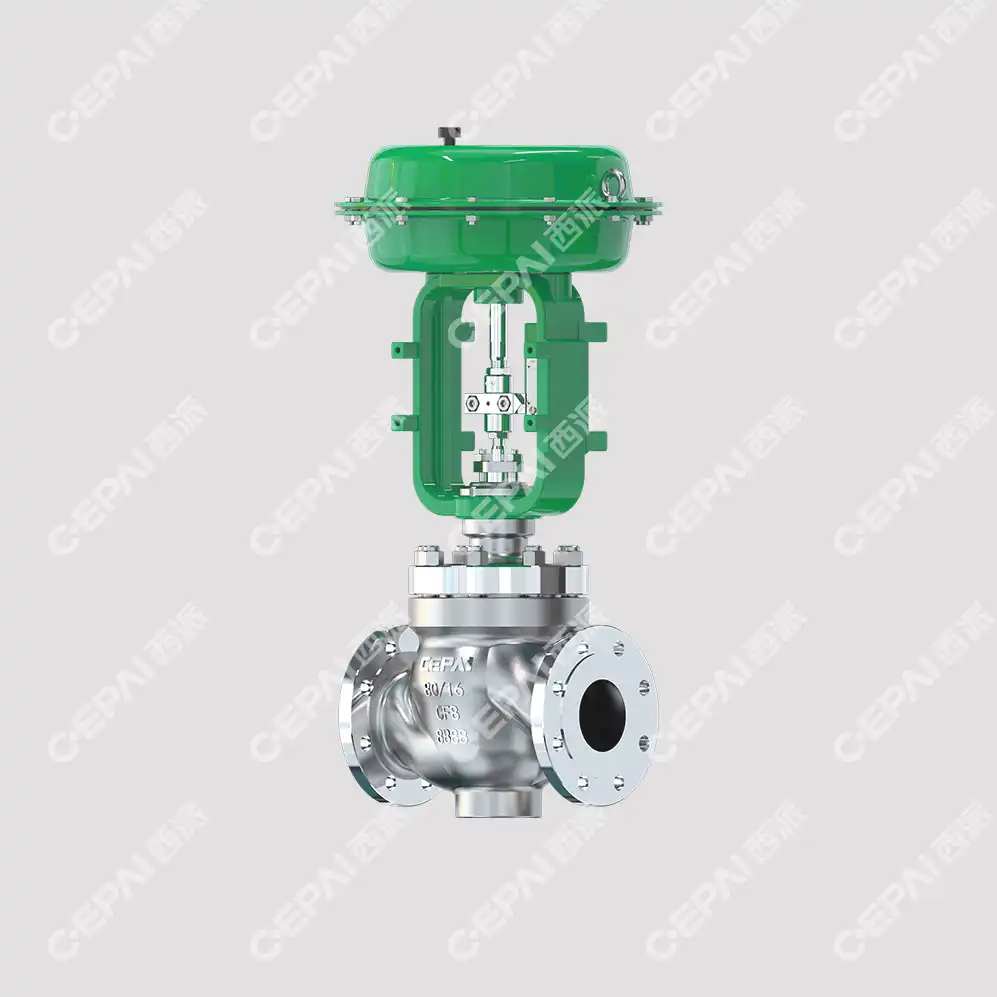Choosing the Right Flow Regulating Valve for Your System
Selecting the appropriate flow regulating valve is a critical decision that directly impacts system performance, operational efficiency, and long-term reliability across industrial applications. A flow regulating valve serves as the control mechanism that manages fluid flow rates, pressure differentials, and system stability in complex piping networks. Whether you're working in petrochemical processing, power generation, or water treatment facilities, understanding the fundamental principles of flow regulating valve selection ensures optimal system performance while minimizing operational costs and maintenance requirements. The complexity of modern industrial systems demands careful consideration of multiple factors including fluid characteristics, operating conditions, control requirements, and environmental constraints when choosing the right flow regulating valve configuration.
Understanding Flow Regulating Valve Fundamentals
Types and Classifications of Flow Regulating Valves
Flow regulating valve technology encompasses various designs, each engineered to address specific operational requirements and application challenges. Globe valves represent one of the most versatile flow regulating valve options, featuring linear motion stems that provide precise throttling control through variable opening positions. These valves excel in applications requiring fine flow adjustment and are particularly effective in systems where pressure drop across the valve can be tolerated. The inherent design of globe-style flow regulating valve units allows for excellent shutoff capabilities while maintaining controllability across a wide range of flow conditions. Ball valves configured for flow regulation offer exceptional durability and tight shutoff characteristics, making them ideal for applications involving abrasive or corrosive media. The rotational motion of ball-type flow regulating valve mechanisms provides quarter-turn operation with minimal torque requirements, resulting in reduced actuator costs and improved reliability. Butterfly valves present an economical solution for large-diameter applications where space constraints and weight considerations are paramount. These disc-type flow regulating valve designs offer excellent flow characteristics with minimal pressure loss, making them particularly suitable for HVAC systems, water treatment applications, and low-pressure gas services.

Control Mechanisms and Actuation Methods
The selection of appropriate control mechanisms significantly influences flow regulating valve performance and system integration capabilities. Manual operation provides direct operator control and eliminates dependency on external power sources, making it suitable for applications where frequent adjustment is not required. However, automated actuation systems offer superior precision and responsiveness for dynamic process control applications. Pneumatic actuators represent the most common choice for flow regulating valve automation, providing reliable operation with excellent speed and force characteristics. These systems utilize compressed air to position the valve stem or disc, offering inherent safety advantages through fail-safe positioning capabilities. Electric actuators provide precise positioning control and excellent integration with digital control systems, making them ideal for flow regulating valve applications requiring high accuracy and remote operation capabilities. Hydraulic actuation systems deliver exceptional force output for large or high-pressure flow regulating valve installations, though they require more complex support systems and maintenance procedures. The choice between these actuation methods depends on factors including response time requirements, available utilities, environmental conditions, and safety considerations.
Material Selection and Construction Standards
Material compatibility represents a fundamental consideration in flow regulating valve selection, as improper material choices can lead to premature failure, contamination, or safety hazards. Carbon steel construction provides excellent strength and durability for general-purpose applications involving non-corrosive fluids at moderate temperatures and pressures. Stainless steel flow regulating valve components offer superior corrosion resistance and are essential for applications involving acidic or alkaline media, food-grade processes, or pharmaceutical manufacturing. Exotic alloys such as Hastelloy, Inconel, or duplex stainless steels may be required for severe service conditions involving high temperatures, aggressive chemicals, or marine environments. The internal components of a flow regulating valve, including seats, stems, and packing materials, must be carefully selected to ensure compatibility with process media while maintaining long-term reliability. Trim materials significantly impact flow regulating valve performance, with options ranging from standard stainless steel to specialized coatings or hard-facing materials designed to resist erosion, cavitation, or chemical attack.
Critical Selection Criteria for Optimal Performance
Process Conditions and Operating Parameters
Accurate characterization of process conditions forms the foundation for proper flow regulating valve selection and sizing calculations. Fluid properties including density, viscosity, temperature, and chemical composition directly influence valve sizing requirements and material selection criteria. Pressure conditions, both upstream and downstream of the flow regulating valve, determine the pressure recovery characteristics and potential for cavitation or flashing phenomena. Temperature variations throughout the operating cycle affect material properties, thermal expansion considerations, and packing selection for the flow regulating valve assembly. Flow rate requirements, including normal operating conditions and potential upset scenarios, establish the sizing basis and control range specifications. Understanding the relationship between these parameters enables engineers to select flow regulating valve configurations that provide stable control performance across the entire operating envelope while maintaining adequate safety margins for abnormal conditions.
Flow Characteristics and Control Requirements
The inherent flow characteristics of a flow regulating valve define the relationship between valve opening position and flow rate under constant pressure drop conditions. Linear flow characteristics provide proportional flow changes relative to valve position changes, making them suitable for applications where system pressure drop remains relatively constant. Equal percentage flow characteristics deliver smaller flow changes at low openings and larger changes at high openings, providing excellent control stability for systems with varying pressure drops. Quick opening characteristics provide rapid flow increase with small valve movements, making them appropriate for on-off service rather than precise flow control applications. The installed flow characteristics of a flow regulating valve system may differ significantly from inherent characteristics due to system effects, piping configuration, and pump curves. Proper analysis of these factors ensures that the selected flow regulating valve will provide the desired control performance under actual operating conditions rather than idealized test conditions.

System Integration and Compatibility Factors
Successful flow regulating valve integration requires careful consideration of system-wide effects and compatibility requirements. Piping configuration upstream and downstream of the valve location affects flow patterns, pressure recovery, and potential for noise or vibration issues. Control system compatibility involves ensuring that the flow regulating valve actuator and positioner can communicate effectively with existing distributed control systems or programmable logic controllers. Signal types, communication protocols, and diagnostic capabilities must align with plant standards and maintenance practices. Installation space constraints may limit flow regulating valve body styles, actuator types, or maintenance access requirements. Weight considerations become particularly important for elevated installations or structural limitations within existing facilities. Environmental factors including ambient temperature extremes, moisture exposure, corrosive atmospheres, or hazardous area classifications influence actuator selection and protection requirements for flow regulating valve installations.
Installation, Maintenance, and Optimization Strategies
Proper Installation Techniques and Best Practices
Correct installation procedures are essential for achieving optimal flow regulating valve performance and longevity throughout the service life. Pre-installation inspection should verify that all components meet specification requirements and that no damage occurred during shipping or storage. Piping system preparation includes ensuring proper alignment, adequate support, and removal of welding debris or other contaminants that could affect flow regulating valve operation. Gasket and bolt selection must be appropriate for the operating conditions and compatible with both the valve and piping materials. Torque specifications should be followed precisely to ensure uniform sealing loads without overstressing flange connections. Actuator mounting requires careful attention to coupling alignment, electrical connections, and air supply connections for pneumatically operated flow regulating valve systems. Initial calibration and stroke testing verify that the installed flow regulating valve responds correctly to control signals and achieves the specified flow characteristics. Documentation of installation parameters, including calibration data and performance verification results, provides valuable baseline information for future maintenance and troubleshooting activities.
Predictive Maintenance and Performance Monitoring
Implementing comprehensive maintenance strategies maximizes flow regulating valve reliability while minimizing unplanned downtime and replacement costs. Regular visual inspections can identify external signs of wear, corrosion, or mechanical damage before they lead to functional failures. Performance monitoring through flow measurement, pressure differential tracking, and actuator response time analysis provides early warning of degradation trends. Vibration analysis can detect mechanical problems such as bearing wear, stem binding, or internal component damage in flow regulating valve assemblies. Thermographic inspection may reveal hot spots indicating internal leakage, friction, or electrical problems in actuated valve systems. Predictive maintenance techniques enable condition-based maintenance scheduling rather than arbitrary time intervals, optimizing maintenance costs while ensuring reliable operation. Advanced diagnostic systems integrated with digital valve positioners provide continuous monitoring capabilities and remote access to performance data for flow regulating valve networks.
Troubleshooting Common Performance Issues
Understanding common flow regulating valve problems and their solutions enables rapid diagnosis and resolution of operational issues. Control instability often results from improper valve sizing, incorrect flow characteristics, or inadequate actuator response speed. Systematic analysis of control loop dynamics, including process response times and controller tuning parameters, typically resolves these issues. Excessive noise or vibration may indicate cavitation, flashing, or mechanical resonance problems requiring changes in valve trim design, installation configuration, or operating conditions. Internal leakage through closed flow regulating valve assemblies can result from seat damage, foreign material contamination, or thermal distortion effects. Proper diagnostic procedures help differentiate between various leakage mechanisms and guide appropriate repair strategies. Actuator problems including slow response, positioning errors, or complete failure often involve air supply issues, electrical connection problems, or internal component wear that requires systematic troubleshooting approaches.
Conclusion
Selecting the optimal flow regulating valve requires comprehensive analysis of process requirements, system constraints, and long-term operational objectives to ensure reliable performance and cost-effective operation. The integration of proper valve technology with suitable materials, actuation systems, and installation practices creates the foundation for successful industrial automation systems that meet both current needs and future expansion requirements.
Ready to optimize your system's flow control performance? CEPAI Group's team of experienced engineers stands ready to provide comprehensive technical consultation and customized solutions tailored to your specific application requirements. Our exceptional durability standards, high-precision control performance, and extensive R&D investment ensure that every flow regulating valve solution delivers superior reliability and operational efficiency. With comprehensive pre-sales technical support, professional installation and training services, plus ongoing maintenance and remote monitoring capabilities, we provide complete lifecycle support for your critical flow control systems. Contact our technical specialists today at cepai@cepai.com to discuss your flow regulating valve requirements and discover how our proven expertise can enhance your system performance while reducing operational costs and maintenance requirements.
References
1. Smith, J.R. & Anderson, M.K. (2023). "Industrial Valve Selection Criteria for Process Control Applications." Journal of Process Engineering, 45(3), 128-145.
2. Chen, L.W., Rodriguez, P.M., & Thompson, D.S. (2022). "Flow Characteristics and Control Performance Analysis of Regulating Valves in Industrial Systems." Control Engineering Practice, 89, 245-262.
3. Williams, R.T. & Kumar, S.N. (2023). "Material Selection Guidelines for Corrosive Service Flow Control Valves." Materials Engineering in Chemical Processing, 31(7), 89-104.
4. Johnson, K.L., Brown, A.F., & Lee, H.J. (2022). "Predictive Maintenance Strategies for Industrial Flow Control Systems." Maintenance Technology International, 18(4), 67-82.
5. Davis, M.P. & Wilson, C.R. (2023). "Cavitation Prevention and Control in Flow Regulating Valve Applications." Fluid Machinery Quarterly, 52(2), 156-171.
6. Zhang, Q.H., Miller, S.A., & Garcia, F.V. (2022). "Digital Integration and Smart Valve Technologies in Modern Process Control." Industrial Automation Systems, 29(6), 203-218.

Get professional pre-sales technical consultation and valve selection services, customized solution services.

About CEPAI


